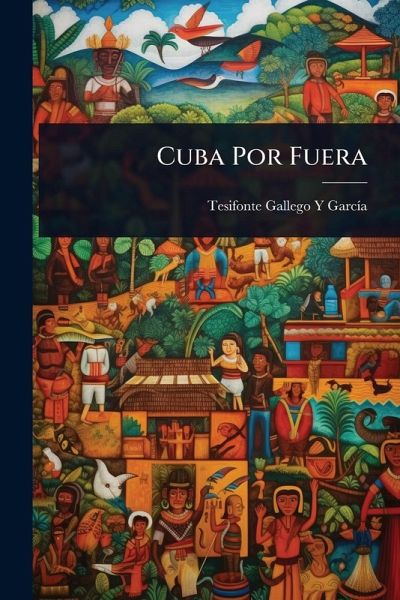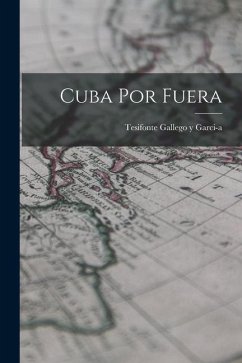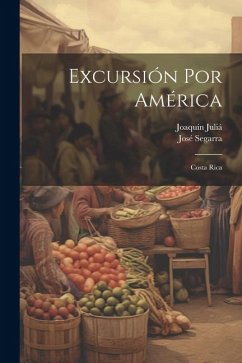
Cuba Por Fuera

PAYBACK Punkte
11 °P sammeln!
Cuba Por Fuera (Apuntes Del Natural), written by Tesifonte Gallego Y GarcÃ-a and published in 1890, offers a fascinating glimpse into late 19th-century Cuba through the eyes of a keen observer. This work blends travel writing with social commentary, providing valuable insights into the culture, society, and daily life of the island nation during a pivotal period. Gallego Y GarcÃ-aâ(TM)s naturalistic approach captures the essence of Cuba, making it a significant historical document and a compelling read for those interested in Latin American history, travel literature, and sociological studi...
Cuba Por Fuera (Apuntes Del Natural), written by Tesifonte Gallego Y GarcÃ-a and published in 1890, offers a fascinating glimpse into late 19th-century Cuba through the eyes of a keen observer. This work blends travel writing with social commentary, providing valuable insights into the culture, society, and daily life of the island nation during a pivotal period. Gallego Y GarcÃ-aâ(TM)s naturalistic approach captures the essence of Cuba, making it a significant historical document and a compelling read for those interested in Latin American history, travel literature, and sociological studies. The author's detailed observations paint a vivid picture of Cuba at a crucial moment in its history. This work has been selected by scholars as being culturally important, and is part of the knowledge base of civilization as we know it. This work was reproduced from the original artifact, and remains as true to the original work as possible. Therefore, you will see the original copyright references, library stamps (as most of these works have been housed in our most important libraries around the world), and other notations in the work. This work is in the public domain in the United States of America, and possibly other nations. Within the United States, you may freely copy and distribute this work, as no entity (individual or corporate) has a copyright on the body of the work. As a reproduction of a historical artifact, this work may contain missing or blurred pages, poor pictures, errant marks, etc. Scholars believe, and we concur, that this work is important enough to be preserved, reproduced, and made generally available to the public. We appreciate your support of the preservation process, and thank you for being an important part of keeping this knowledge alive and relevant.












